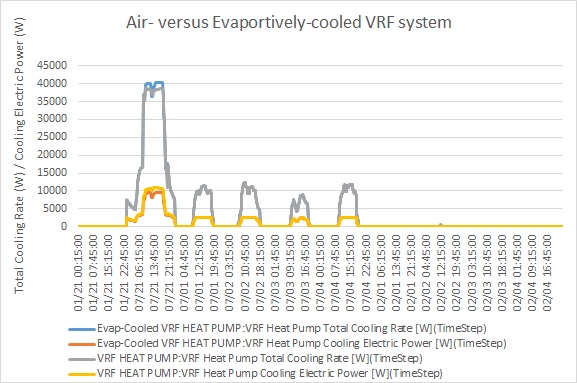Modeling EvapCooled VRF with Evaporative Condenser Effectiveness
I've been modeling a building in OpenStudio with air-cooled VRF and a DOAS for ventilation requirements. I've used the LG BCL components and have an air-cooled system working without a problem, however, when I take the IDF and set the condenser type to EvapCooled and rerun it I see no change in performance. The documentation shows the below formula for how the air temperature on the condensing unit is adjusted, are there additional changes that need to be made to observe a change? Or is it something to do with using the Table:MultiVariableLookup object rather than a curve? I have specified an EvapCondEffectiveness of 0.9. I have also let most components autosize rather than using the specified manufacturer capacity as I'm just trying to get a rough estimate of the performance relationships.
Tcondinlet=(Twb,o)+(1−EvapCondEffectiveness)(Tdb,o−Twb,o)
I created the original model using OpenStudio 1.7.0 and I am using the latest version of EnergyPlus 8.2 to run this.






I believe this should work. I'll have to test to be sure.
@rraustad, I've tried it a couple of times now, but I see no effect when I run it using the set up described above.
Are you able to provide the performance parameters that did not change? I would only expect the condenser variables to show differences.